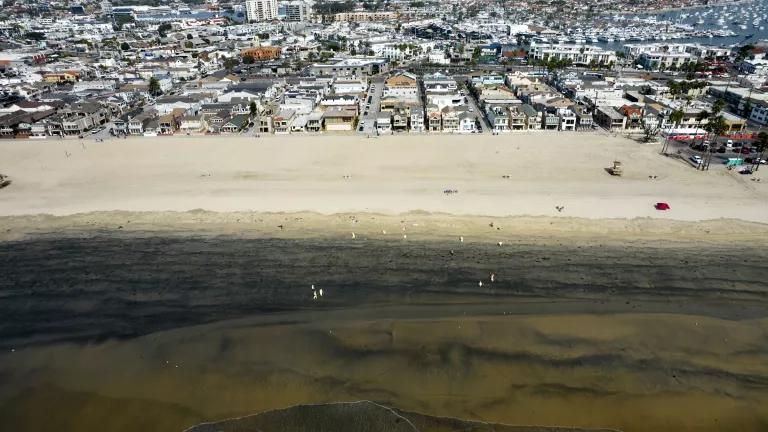Citzens' Petition Calls for Stricter Environmental Enforcement to Safeguard Fragile Ecosystems in Gulf of California

Ralph Lee Hopkins
Mexican and U.S. environmental organizations have once more come together to help protect some of the most iconic sites in the Gulf of California. Eleven groups, including NRDC, submitted a citizens’ petition to the North American Commission on Environmental Cooperation (CEC) highlighting a systematic lack of enforcement of Mexican environmental safeguards during the approval process of four major coastal tourism developments. The petition calls on the CEC to investigate and develop a factual record about the environmental impact reviews of those projects and the resulting violations of laws and regulations. Among the projects cited in the petition is Cabo Cortés, the proposed mega resort that threatened the fragile coral reefs of Cabo Pulmo National Park. NRDC partnered with citizens and environmental groups in Mexico in an international campaign that ultimately led to the cancellation of the controversial project in June 2012. But interest in developing the land neighboring Cabo Pulmo continues, so we’ve joined partner groups in this petition to help ensure that going forward Mexico upholds environmental laws meant to protect Cabo Pulmo and the Gulf of California’s other natural treasures.
Called the “Aquarium of the World,” the Gulf of California is one of the richest marine systems on the planet, sheltering thousands of species, including endangered marine mammals, sea turtles, and sharks. Every year migratory birds visit the gulf’s mangrove-lined coastlines and hundreds of species of fish make it some of Mexico’s most productive waters. Yet plans for massive coastal resorts place increasing pressure on the region’s biodiversity and natural resources, and threaten the well-being of local communities. This great video recaps how poorly planned, large-scale tourism has already negatively impacted some regions of the Baja California Peninsula which borders the gulf to the west.
Cabo Cortés was one example of the type of ill-conceived development that can overburden the ecosystems and natural resources local communities depend upon. The blogs here and here detail why Cabo Cortés was the wrong type of the project in the wrong place and why it should not have received any permits. But incredibly, Cabo Cortés did receive approvals, leading to a multiple-year campaign to stop it.
That campaign brought together local residents, national and international NGOs, scientists, and tens of thousands of concerned citizens around the world. It was an example of environmental activism at its best – grounded in local grassroots efforts and crossing borders to protect places of global importance. The cancellation of the Cabo Cortés project in June 2012 was a major victory for international marine conservation.
Yet it soon became evident that Cabo Pulmo was not entirely safe. Just two short months after the Cabo Cortés cancellation a new, but similarly unsustainable project, was proposed for the same property. This was a clear sign that there continues to be interest in pushing through large-scale resorts near Cabo Pulmo National Park. Other proposals along the Gulf of California coast also indicate that Cabo Cortés is not an isolated case, and that stricter enforcement of environmental laws is needed to protect these areas.
The CEC petition highlights four projects (Cabo Cortés, Playa Espíritu, Paraíso del Mar and Entre Mares) that received approvals from Mexico’s Ministry of Environment and Natural Resources, despite failing to comply with existing laws and regulations. This lack of enforcement of environmental protections during the impact evaluation of these projects put critical areas in the gulf at risk: Cabo Pumo National Park, the Marismas Nacionales wetlands and the Bay of La Paz (see the NRDC map below for location of the projects).
Specifically, the petition points to repeated failures to uphold Mexico’s General Law for Ecological Equilibrium and Environmental Protection, the General Wildlife Law, and regulations related to environmental impact assessment, mangrove protection and species protection. In some cases, this weak enforcement is already contributing to the degradation of mangrove forests. An investigation and factual record from the CEC would go a long way toward strengthening the environmental impact review process of similar projects.
When Cabo Cortés was proposed, citizens and NGOS came together to stop a project that should have never received any approvals and could have devastated the Cabo Pulmo reef system. But if Mexican environmental authorities effectively enforce their own environmental safeguards, such projects could be stopped from the get-go. Mexico’s new administration and its Environment and Natural Resources Minister Guerra Abud now have the chance to make sure that, going forward, these types of projects are evaluated in an open and transparent manner that carefully assesses all impacts and ensures that local communities have a voice in the decisions that impact their natural surroundings. The CEC can help make this happen by bringing greater clarity about the enforcement of environmental protections along the Gulf of California coast.
View Mega Tourism Development Projects Threaten Gulf of California in a larger map. Clicking on each site will open up more info.
______
- Cabo Pulmo National Park, one of the world’s most robust marine reserves and home to the healthiest and possibly oldest coral reef in the American Pacific, was imperiled by Cabo Cortés until former President Calderón cancelled the project following a successful grassroots and international campaign. But other projects are still waiting in the wings.
- Marismas Nacionales wetlands, the most extensive and well-preserved mangrove forest in western Mexico is threatened by construction at Playa Espírtu.
- The Bay of La Paz , some of the richest waters in the Gulf of California and critical nesting ground for migratory birds, is at risk from two projects: Paraíso del Mar, already under construction, and Entre Mares, proposed right next door.



